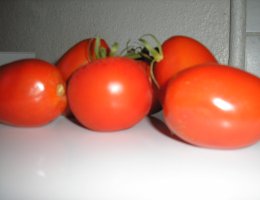Weeds
Grasses
Sedges
Broadleaf
Diseases
Fungal
Bacterial
Viral
Agro-ecology
Cultural benefits are derived when tomato is intercropped with
two or more plant species (onion, nasturtium, marigold, asparagus, carrot, parsley, cucumber) in close proximity. The benefits include pests and disease control, higher yield, and an increase in the
biodiversity of ecosystems (Kuepper; Dodson, 2001). Intercropping tomato with cabbage reduced flea beetles and diamondback moth. Tomato plants attract more natural enemies that search for preys (Oregon Biodynamics Group, 2000). Cover crops such as Tepary beans (
Phaseolus acutifolius), Wedelia (
Wedelia trilobata) and Sun hemp (
Crotalaria juncea) have a protective effect on tomatoes against whiteflies. These cover crops serve as a refuge for the
natural enemies of whiteflies and soybean looper, thus lowering their population densities (Pantoja; Cabrera, 1999). Planting dill and lovage as trap crops lures hornworms away from tomato plants (Ellis; Bradley, 1996: pp. 227-233, 485).
The nitrogen (N) requirement of tomato is moderate during foliage growth until fruit set. Phosphorus (P) is very important for vigorous growth and fruit production. Near maximum yield is attained at approximately 0.2 mg P/l soil solution. Potassium (K) is needed for fruit set and enlargement. Magnesium is to be applied in soils deficient in this nutrient. Calcium deficiency may cause blossom-end-rot or apical
necrosis (
IFA, 2000). However, fertilizer recommendations based on soil analyses are preferred in getting the right amount of fertilizer to be applied. Ask for assistance from your local agriculturist office.
Bat guano taken from caves can be directly applied to the soil or made into tea as foliar spray. Till-in 2 kg/100 sq feet or 3 tsp per gallon of water. This stimulates soil microorganisms to develop. If you have access to fresh seaweeds, rinse these seaweeds first to remove the salt; then apply them as mulch. Apply œ-1 kg /100 sq feet area. Seaweed is a long-term soil conditioner and helps plants during stress conditions. It contains micronutrients, amino acid and enzymes plus growth hormones that stimulate plant cell division (Card; et. al., 2002: pp. 7-8).
To help control fungal disease, apply compost tea made from mature-based compost. The microorganisms present in the compost tea attack the fungi that cause tomato disease such as downy mildew. To make your own compost
tea, place 1-gallon of matured compost in a 5-gallon pail and fill it with water. Stir well and let it stand for 3 days in a warm place. Strain the mixture which is then ready for application. Remove heavily diseased leaves before application. It is better to spray late in the afternoon, so that the leaves remain damp for several hours. Check affected plants every 3-4 days and repeat applications if symptoms persist (Ellis; Bradley, 1996: p. 427).
OISAT Field Guides
Field Guide to Non- chemical Pest Management in Tomato Production
download (908 kb)
External links
References
- AVRDC. (2003): AVRDC strikes gold with vitamin-rich tomato. Centerpoint. Vol. 21, No.1.
- Card, A.; Whiting, D.; Wilson, C. (2002): Organic fertilizers. Colorado Master Gardener Training. Colorado State University. CMG Fact Sheet #S-34.
- Ellis, B.; Bradley, F. (1996): The organic gardener's handbook of natural insect and disease control. Rodale Press. Emmaus, Pennsylvania.
- ICIPE. (2003): Development of biocontrol-based management of Helicoverpa armigera in eastern and southern Africa. 2000-2003 ICIPE Scientific Report. International Center for Insect Physiology and Entomology, Nairobi, Kenya.
- ICIPE. (2003): Development of environmentally friendly management methods for red spider mites in smallholder tomato production systems... 2000 - 2003 ICIPE Scientific Report. CD Rom. International Center for Insect Physiology and Entomology, Nairobi, Kenya.
- Pantoja, A.; Cabrera, I. (1999): Enhancement of biological control for management of silverleaf whiteflies in vegetables. Crop Protection Department. University of Puerto Rico, Mayagüez, Puerto Rico.
- Wagner, Georg. (2004): Vegetables' pests. Personal Communication. Schopperplatz 14, 4082 Aschach / Donau.
- Zalom, F.; et al. (2002): Tomato. UC IPM Pest Management Guidelines. University of California Agriculture and Natural Resources.

